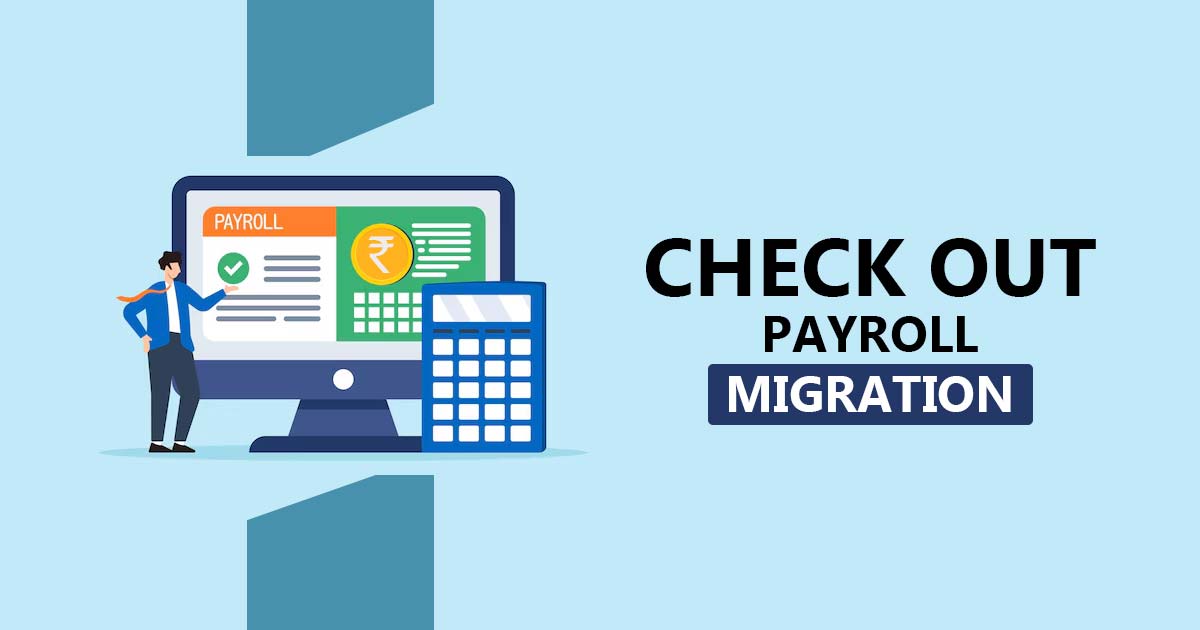Step-by-Step Process to Understanding Payroll Migration

In recent years, the definition of payroll has evolved to encompass a comprehensive overview of employee compensation. It now includes a complete list of employees who are to receive a salary within a specific time frame, the total salary amount to be paid, and additional information such as each employee's designation, department, deductions, bonuses, perks, incentives, and leave entitlements. The process of managing the payment of wages to staff within an organization or company is known as payroll processing.
Initially, organizations managed payroll internally, handling it in-house. Over time, as compliance requirements and employee numbers increased, the management of payroll became a more complex and time-consuming task. As a result, many organizations began outsourcing their payroll management to professional accountants. With advancements in technology, this responsibility increasingly shifted to payroll software solutions. Today, payroll software such as Gen Payroll and Online Payroll is widely utilized by both small and large corporate entities.
Payroll Migration is the process of changing from one payroll system to another. This change can happen for various reasons. For example, the current system might not be working well, which can slow down productivity and cause delays in paying employees. On the other hand, a new payroll system may offer better performance and help reduce costs, which can be especially beneficial for small and medium-sized businesses as well as startups.
Many companies choose to completely outsource their payroll management to specialized payroll vendors. These vendors help organizations manage their payroll effectively through dedicated payroll management systems or software.
In some cases, organizations may struggle to transition to new and advanced payroll software on their own, leading them to seek external payroll migration services. Typically, the migration process occurs at the end of a financial year or after a financial quarter, depending on the organization's operational schedule.
Step 1: Validation and Updation of Employee Data
The first step includes the verification and validation of employee-related data. Management makes sure that all the data in the payroll data is accounted for and updated. Based on the size and structure of an organization, the management verifies the details of all the employees and ensures that the data is coherent and all-inclusive.
Step 2: Data Transition
The second step includes the transit of data. The organization or the payroll vendor takes the data from the existing system and stores it at some other place. The data may include the existing Payroll and the current format of Employee Resource Planning. Sometimes, Payroll Vendors upgrade the protocols when the software is outdated/obsolete or relinquish it in the current format. Almost every Payroll services provider uses the cloud-based method
Step 3: Revalidation and Approval
The third step includes the revalidation of transmitted data. The organisation revalidate the correctness of the data which is transmitted. The new platform is examined by the professionals and some selected employees to get their feedback and suggestions. After that, the management verifies & approves the software and permits the employees to use the payroll system.
Step 4: Training
Training is the next step which includes the impartment of knowledge and skills to use the software to the employees of an organisation. Once the software gets a green signal, the training is imparted so that staff can align themselves with the new software platform and use it more efficiently. Payroll software has many benefits for small & big businesses. We are highlighting a few benefits of Payroll mitigation to the vendors, particularly with cloud-based platforms and Payroll.
No Pressure on the Organization
The organisation do not have to deal with any pressure to keep an eye on Payroll and manage it for all its employees. Organisations can give 100% focus on productivity and earn higher profits.
Read Also: SAG Infotech's Gen IT Software Role for Tax Professionals
Vendors Hold Complete Responsibility
Vendors hold complete responsibility for the alacrity, automation and accuracy of the payroll process. Payroll vendors with their innovative approach add value to payroll management.
Easy Access & Accurate Data
Payroll vendors and software provide user-friendly access to employees and guarantee errorless and well-maintained reports & data.
The Efficiency of the Software Can be Easily Measured
This is another advantage of the software that the organization can easily measure the efficiency of the software and witness the apparent results of the software in terms of seamless management productivity and accuracy.
Data Security
Data security is guaranteed with cloud-based systems. Cloud-based systems always have back-ups and they are improbable to crashes of the payroll system which leads to hefty data loss. In this way, cloud-based payroll software elevates the progress and performance of the organization.
Many organizations are transitioning to payroll processing and payroll software for their HR management due to the numerous advantages these modern solutions offer. Compared to traditional methods, payroll software enhances efficiency, accuracy, and overall productivity, providing a significant competitive edge for the organization.
